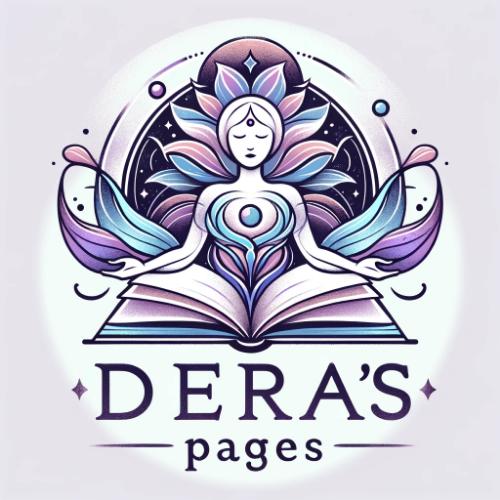Exploring the Symbolism of Pain
The Physical and Emotional Dimensions of Pain
Pain is a complex sensation that encompasses both physical and emotional dimensions. On a physical level, it serves as a warning signal from the body, indicating that something is wrong and needs attention. Emotionally, pain can symbolize deeper feelings of hurt, trauma, or unresolved issues that manifest in physical discomfort.
The Metaphorical Meaning of Pain
In many spiritual and philosophical traditions, pain is often seen as a metaphor for growth, transformation, and healing. Just as physical pain can indicate the need for medical attention, emotional pain can signal the need for inner reflection, self-awareness, and personal growth.
The Role of Pain in Spiritual Practices
Various spiritual practices and belief systems incorporate the symbolism of pain as a means of achieving spiritual enlightenment and transcendence. Pain can be viewed as a necessary part of the journey towards spiritual evolution, teaching valuable lessons and guiding individuals towards a higher state of consciousness.
Symbolic Representations of Pain in Art and Literature
Throughout history, pain has been a recurring theme in art and literature, serving as a powerful symbol that conveys deeper meanings and emotions. Artists and writers often use pain as a metaphor to explore themes of suffering, endurance, redemption, and the human experience.
Healing and Transformation Through Pain
While pain can be a challenging and uncomfortable experience, it also has the potential to catalyze profound healing and transformation. By acknowledging and embracing the symbolic significance of pain, individuals can tap into its transformative power to overcome obstacles, heal past wounds, and embark on a journey of self-discovery and renewal.
Understanding the Impact of Symbolism on Human Emotions

The Power of Symbols
Symbols hold immense power when it comes to influencing human emotions. Whether they are visual, auditory, or tactile, symbols have the ability to evoke deep feelings and associations within us. Brands, logos, and even cultural symbols can trigger a wide range of emotions, from nostalgia and joy to fear and sadness.
The Psychology Behind Symbolism
In psychology, symbolism is often linked to our subconscious mind. Certain symbols can tap into our deepest desires, fears, and beliefs, shaping our perceptions and behaviors. Understanding the psychological mechanisms behind symbolism can help us better comprehend our own emotions and reactions to the world around us.
Symbolism in Marketing
Marketers and advertisers leverage the power of symbolism to create strong brand identities and connect with their target audience on an emotional level. Logos, colors, and slogans are carefully chosen to evoke specific emotions and convey brand messages effectively. By understanding the impact of symbols, businesses can build lasting relationships with consumers.
Symbolism in Art and Culture
Artists and cultural creators use symbolism to communicate complex ideas and evoke profound emotions in their audience. Whether through literature, visual arts, or music, symbols serve as a universal language that transcends barriers and speaks directly to our hearts and souls. Exploring the symbolism in art and culture can deepen our appreciation for human creativity.
The Role of Symbols in Spirituality
Symbols play a crucial role in spirituality, providing seekers with tools to connect with the divine and explore the mysteries of existence. From ancient religious symbols to meditation practices, symbolism is deeply ingrained in spiritual traditions worldwide. By delving into the meanings of spiritual symbols, individuals can embark on profound inner journeys.
Interpreting the Deeper Meanings Behind Pain Symbols

Understanding Symbolism in Pain
Pain symbols often carry deeper meanings that go beyond physical discomfort. Different cultures and belief systems interpret pain symbols in unique ways, tapping into the spiritual and emotional aspects of human experience.
The Connection Between Pain and Spirituality
In many spiritual traditions, pain is seen as a metaphor for personal growth and transformation. Understanding the symbolic significance of pain can lead to profound insights into one’s inner journey.
Common Pain Symbols and Their Interpretations
- Sharp Pain: Often associated with sudden realizations or breakthroughs in awareness.
- Dull Ache: Symbolic of unresolved emotional baggage or lingering trauma.
- Burning Sensation: Signifies a purification process, letting go of negative energies.
Using Pain Symbols for Personal Growth
By paying attention to the subtle messages conveyed through pain symbols, individuals can navigate challenges with a deeper sense of purpose and meaning. Embracing pain as a teacher rather than an enemy can lead to profound spiritual growth.
The Role of Pain Symbols in Healing
Therapeutic modalities that incorporate the interpretation of pain symbols can facilitate holistic healing by addressing underlying spiritual and emotional issues. By understanding the deeper meanings behind pain symbols, individuals can embark on a journey towards wholeness and self-discovery.
Examining the Role of Symbolism in Shaping Human Perception of Pain

The Power of Symbols in Understanding Pain
When it comes to the experience of pain, human perception is heavily influenced by various symbolic representations. Symbols play a crucial role in shaping how individuals interpret and respond to pain, affecting both the physical and emotional dimensions of the sensation.
From ancient civilizations to modern societies, symbols have been used to express, communicate, and make sense of pain. Whether it’s the symbol of a broken heart representing emotional distress or the red cross symbolizing physical injury, each symbol carries a unique significance that resonates with individuals at a deeper level.
Symbolism and Cultural Perspectives on Pain
Cultural beliefs and traditions significantly impact how pain is perceived and expressed within a society. Symbols rooted in cultural contexts often shape the way individuals understand and cope with pain, influencing their treatment-seeking behaviors and pain management strategies.
In some cultures, pain is seen as a test of one’s endurance and strength, symbolizing resilience and perseverance. In others, pain may be associated with divine punishment or spiritual transformation, reflecting deeper philosophical beliefs.
The Influence of Symbolism on Pain Management
Healthcare providers and therapists recognize the importance of symbolism in pain management and rehabilitation. By incorporating symbols of healing, hope, and strength into therapy sessions, patients can experience a shift in their perception of pain and a greater sense of empowerment in their recovery journey.
| Symbol | Meaning |
| Lotus Flower | Symbolizes resilience and growth |
| Phoenix | Represents transformation and renewal |
| Tree of Life | Signifies strength and interconnectedness |
By leveraging the positive connotations of these symbols, healthcare professionals can enhance the effectiveness of pain management interventions and foster a more holistic approach to healing.
Embracing Symbolic Healing Practices
Alternative therapies such as acupuncture, meditation, and energy healing often incorporate symbolic elements to address physical and psychological pain. The use of mudras in yoga to symbolize energy flow or the chanting of mantras for pain relief exemplifies the integration of symbolism in healing practices.
By engaging with these symbolic healing modalities, individuals can tap into their inner resources, cultivate a positive mindset, and facilitate the body’s natural ability to heal itself.
In conclusion, the role of symbolism in shaping human perception of pain is multifaceted and profound. By harnessing the power of symbols, individuals can transform their experience of pain, find meaning in their suffering, and embark on a journey of healing and self-discovery.


Article written by Dera
Greetings, I am Dera, a 35-year-old individual with a deep passion for spirituality. Through my website, I aim to share my insights and knowledge to help others on their spiritual journey. Join me on the path to inner peace and enlightenment.